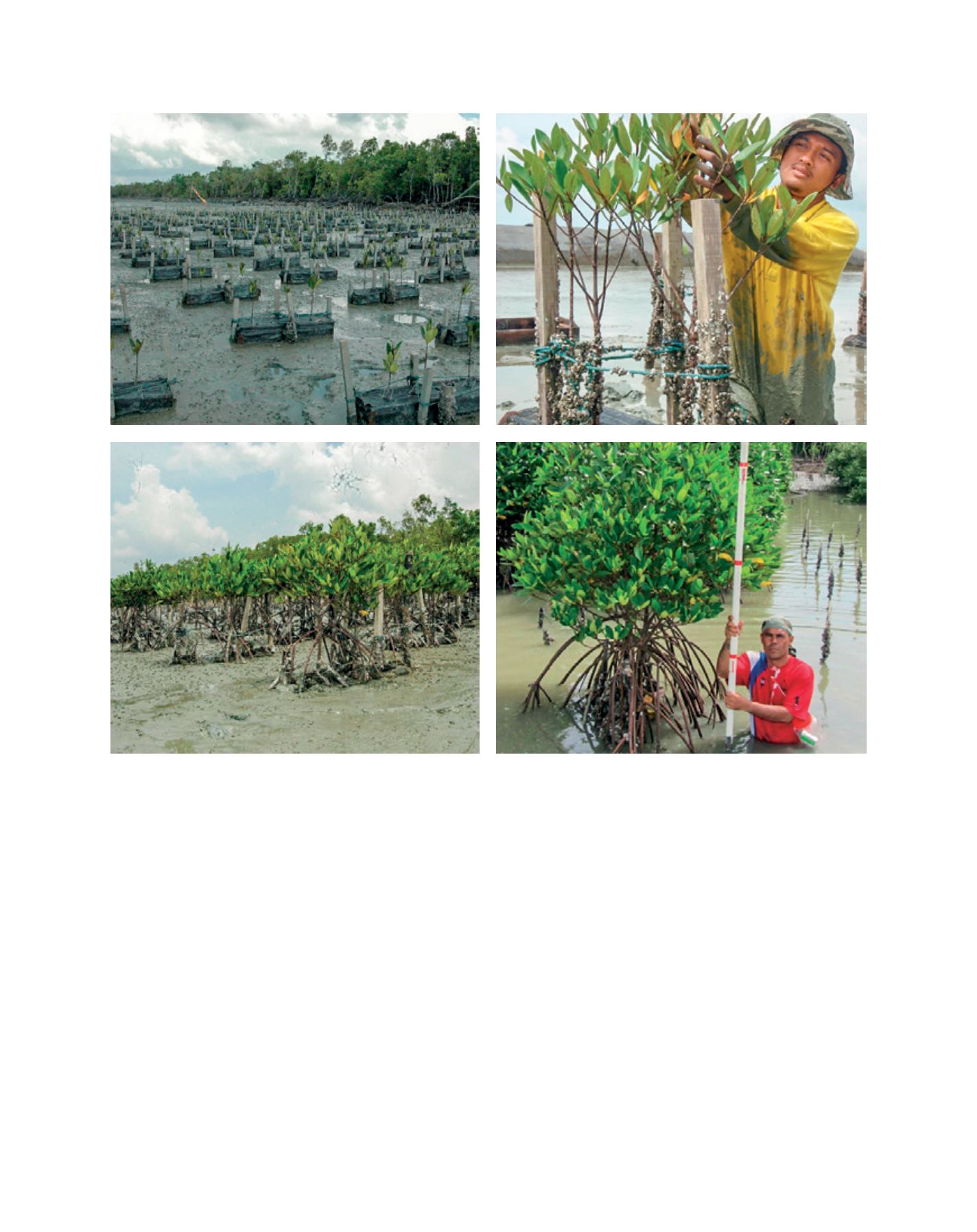

[
] 180
Images: FRIM
Rhizophora apiculata
planted using Comp-Mat planting techniques (clockwise, from top left) six months, 18 months, 27 months and 36 months after planting
The geotubes create a calmer wave environment in their
lee as larger waves break upon them. The calmer state behind
the geotubes induces substrate build-up allowing the setting
of semi-stable mudflats between the geotubes and shoreline.
This provides space for mangrove planting trials. However,
the mudflat is still in semi-liquid form. Thus, it provides
poor anchorage for mangrove seedlings to grow and cannot
withstand the strong wave and current actions. Therefore,
innovative planting techniques have been introduced as
alternative means for rehabilitating the site.
The rehabilitation project commenced in December 2007.
Three innovative mangrove planting techniques were devel-
oped and tested (Comp-Mat, Comp-Pillow and Bamboo
Encasement methods) against the current standard planting
practice or conventional planting techniques with the estab-
lishment of geotubes as breakwaters at the project site. Three
species of mangrove seedlings were used to investigate the
suitable planting techniques. These were
Rhizophora apicu-
late, Rhizophora mucronata
and
Avicennia alba.
Assessment of
survival and growth performance of the planted mangroves
has shown that only Comp-Mat and Comp-Pillow planting
techniques were successful in rehabilitating the degraded
mangroves at high-risk sites.
The project has proven that the breakwater geotubes
induced substrate build-up on the landward side and that
the semi-liquid mudflats changed to structured mudflats,
thus allowing a setting for the regeneration of mangroves
either through replanting using innovative techniques
or through natural regeneration of mangrove wildings.
New information and records on rehabilitating eroded
coastal mangroves were generated from the successfully
established seaward demonstration plot at the beach of D’
Muara Marine Park Resort with mixed mangrove species
(
Rhizophora apiculata, R. mucronata, Avicennia alba
and
A.
officinalis
). From the output of the project it was concluded
that the design of geotubes established at the project site
can be used as a benchmark for establishing breakwaters
in other places.
L
iving
L
and
















